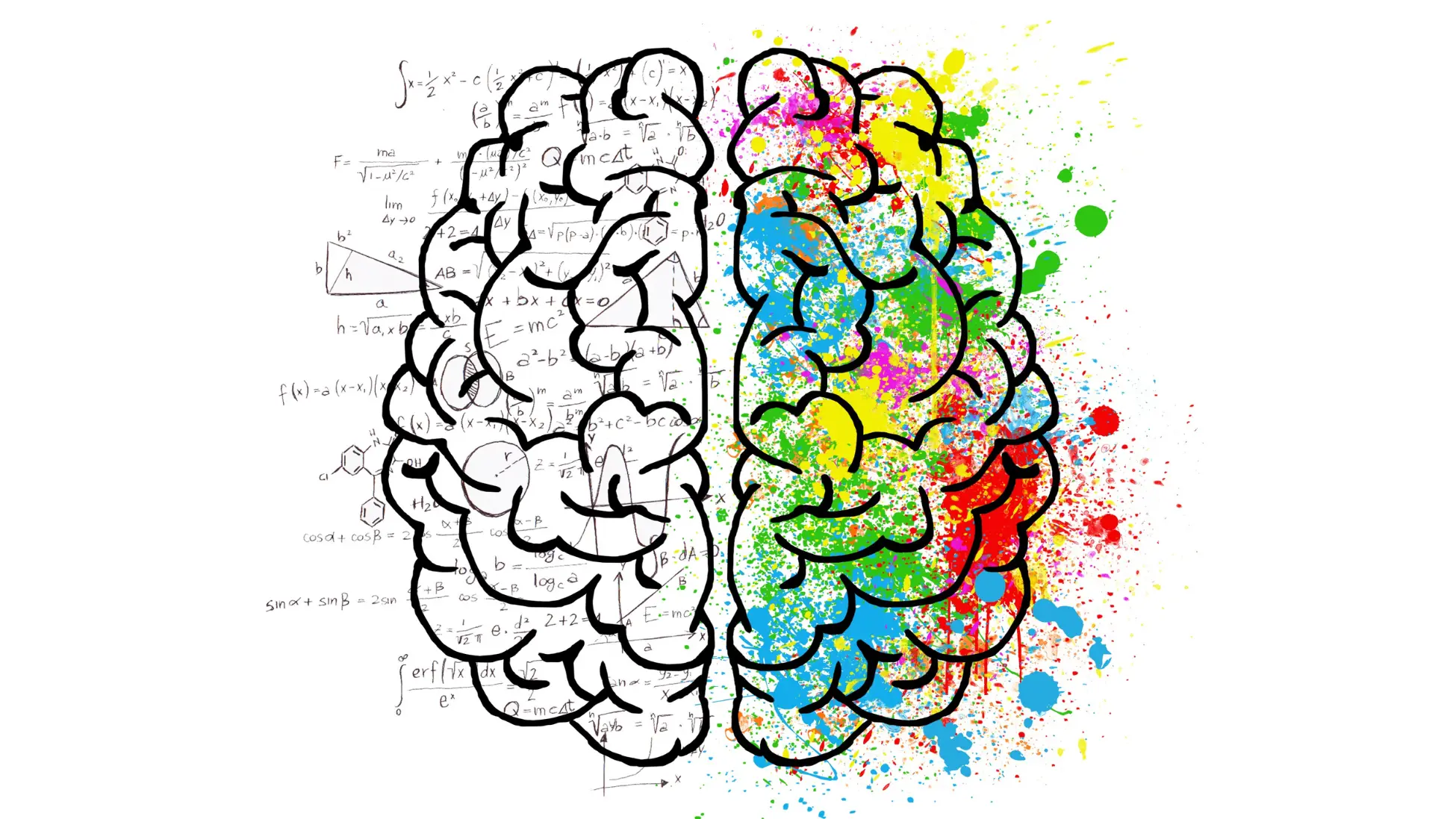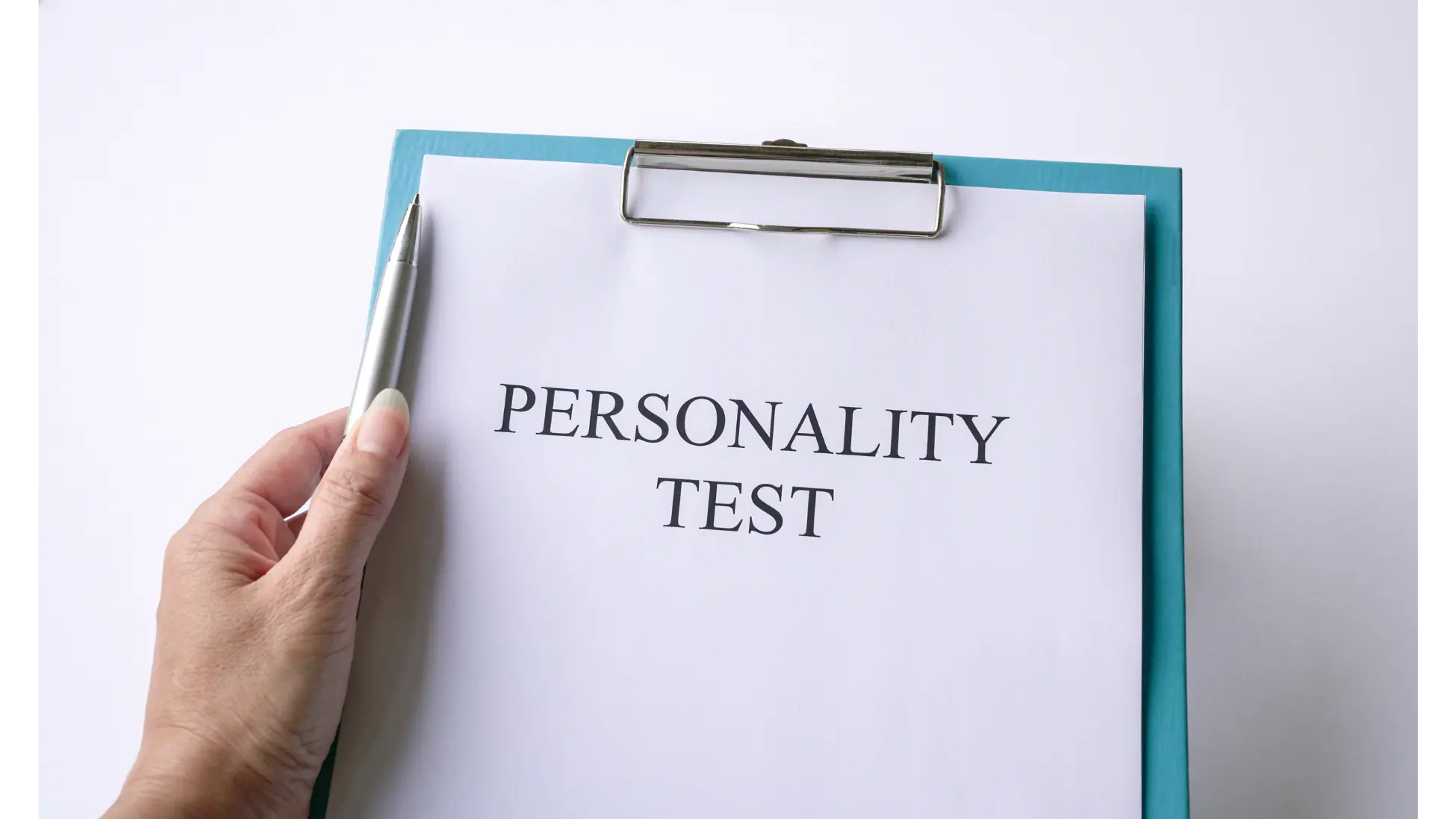Interview with Fred Switzer and Jo Jorgensen Regarding Success Portraits Personality Test
Fred Switzer and Jo Jorgensen are on the faculty of Clemson University, where their focus is industrial-organizational (or I-O) psychology. They recently created the Success Portraits Personality Test (SPPT)—available at SuccessPortraits.com. Besides the comprehensiveness of the traits it considers, the test also examines these traits across different situations. Traits, according to Switzer and Jorgensen, can manifest themselves differently in different situations or contexts. Thus, a trait evident among friends may be less evident in relating to a boss.
According to Switzer and Jorgensen, the Success Portraits Personality Test breaks new ground in the field of personality testing by underscoring the context dependence of traits. In this interview, SuccessPortraits.com’s content and media editor Chloe Dembski attempts to make clear how the Success Portraits Personality Test advances our understanding of personality.
Index
- Background in I-O Psychology
- A thumbnail of I-O Psychology
- About Success Portraits Personality Test (SPPT)
- The 19 personality traits
- The effect of situations on personality
- A comparison to Myers Briggs and other personality tests
- Personality in the workplace
- The types of Success Portraits Personality Tests
- Test reliability and validity
- Future test improvements
- The impact of Success Portraits Personality Test
Background in I-O Psychology

Chloe: It’s great to have this opportunity to interview the both of you. Let’s start with your educational background and how you became interested in industrial/organizational, or I-O, psychology? Describe your training and early work in I-O psychology. What set you on the track toward a life of scholarship, research, and teaching? Briefly summarize your main research interests over the years. Also, and this is to Jo, as the 2020 Libertarian Party candidate for US president, how has your political career influenced your psychology studies and vice versa?
Fred: In my early education, I was always a science nut (i.e., even more enthusiastic than a nerd). I went to elementary, middle, and high school in my small central Texas town. Even while pursuing my undergraduate degree in psychology at the University of Texas at Austin, I took lots of physics, math, chemistry, astronomy, etc. I’ve always been interested in all “the great unanswered questions”—that’s why I’ve always followed developments in particle physics and cosmology. At the same time, I was raised to value knowledge with practical applications—so industrial/organizational psychology was a natural fit for me.
How the human mind works is still one of the great unanswered questions (but we’re making terrific progress). I-O psychology is applying knowledge about the human mind to something that, for most people, plays a huge role in their life and their identity—work. Even in high school I knew I wanted to find out new things and then apply them to help people. Becoming an I-O psychologist let me do both. I originally considered social psychology as my primary interest but as soon as I discovered I-O, I knew it was the specialty for me.
“I’ve been accused of having ‘academic ADD’ and that’s absolutely true.”
My research interests over the years have varied—sometimes to a fault. I’ve been accused of having “academic ADD” and that’s absolutely true. I’ve been interested in motivation, psycholinguistics, adverse impact (job discrimination), judgment and decision-making, occupational health psychology, meta-analysis, computational modeling, and right at the end of my career, machine-learning (better known now as “artificial intelligence”). I’m sure I’m leaving a couple of things out of that list…
I’ve been extremely fortunate to have some of the best professors and classmates that anyone could wish for. My classes at the University of Texas at Austin and Lamar University challenged and stretched me every day. There are literally dozens of people who helped me along the way, but I owe a special debt of gratitude to my advisor and mentor Chuck Hulin and my wonderful dissertation advisor Janet Sniezek, as well as my classmates at the University of Illinois at Urbana-Champaign. Those people gave me the most fun and challenging career I could have imagined.
Jo: I grew up in a fairly blue-collar household. My father was a cement contractor. He owned his business, though, so we were able to afford things that many blue-collar households couldn’t afford. As was typical in the 1960s, my mother was a homemaker.
My background gave me an advantage for this project. I’m a bit more practical than many of the abstract intellectuals in academia. I’m focused on “Does it work?” and “Does it get the job done?” And unlike many in academia, I speak in plain English!
While receiving my B.S. in Psychology at Baylor University, my budding capitalist ears perked up when my statistics professor explained how he had saved a company in another state over a million dollars on an assembly line by devising a quick test to find the best employees for the job. That’s what I wanted to do! I loved statistics and thought it’d be great to have fun while helping companies save millions of dollars.
During that time, there wasn’t a separate “industrial/organizational” field in psychology. As an undergrad, I took the first graduate course in statistics, and did very well. But then life happened, and I needed to move to a different city. I earned my MBA and worked for IBM.
But I always wanted to go back to psychology, though. I finally applied to an I-O program when I was 41 years old and owned a software duplication company. The internet was about to destroy my company, and psychology now had a specific field for what I wanted to do.
My intent with an I-O degree was always to join the business world. While my company was winding down, I did do some consulting with Fred as a partner. Then Fred sent me an email that would change my life. The subject line read something like “Think about this before you say No.”
He was filling in as interim Department Chair for the Psychology Department (the same program I had graduated from a few years earlier), and he needed an additional instructor. He asked me if I would mind being an adjunct instructor for the year, which I agreed to only as a favor to him. Given my background, the world of academia was foreign to me.
And yet, about six weeks into the gig, I realized this was the best job ever! And I’m still there. I just love sharing the interesting field of psychology with students, and love the autonomy of the job itself. I’m a lecturer, not a tenure-track professor, preferring the practical side in academia of teaching, rather than research. I emphasize research, however, in my classes.
Since psychology is basically a manual for how humans think, I use what I know from psychology in solving problems and answering questions. For instance, while it’s a myth that “people equate change with pain” (depends on the change), I know that people don’t like uncertainty. Rather than describe a policy in a way that makes it sound new, which might scare some people, I’d phrase it in a way that shows it’s been done before.
A Thumbnail of I-O Psychology

Chloe: Please provide a thumbnail of I-O psychology? How did the field get started, what is its history, and what is it trying to accomplish? This is to Fred: Describe your doctoral program at the University of Illinois, where the emphasis seemed a bit different from I-O psychology as currently practiced. This is to Jo: We understand that Fred was your doctoral supervisor at Clemson; how did that happen and how has it worked out? How does the Success Portraits Personality Test fit within I-O psychology?
“In I-O psychology, we study people at work and everything that work involves…”
Fred: Here’s the world’s fastest history of I-O psychology: Industrial-organizational psychology is one of the 20 to 40 (depending on how you’re counting) subdisciplines of modern psychology. Nearly everyone automatically assumes that “psychology” means clinical or counseling psychology, but those are just two of the many and varied subdisciplines. In I-O psychology, we study people at work and everything that work involves: from job motivation and satisfaction to organizational structure to the research methods that you need to study people at work.
I-O psychology got started back in the early 20th century when folks like Hugo Munsterberg took their psychology training (and psychology was in its infancy back then) and applied it to work. By the way, some sources claim that Walter Dill Scott got the first Ph.D. in I-O psychology, but he was studying advertising. That’s not really part of I-O. I think Lillian Gilbreth was the first real I-O psychologist to get a Ph.D. in the field. The first part of her dissertation title was “The Psychology of Management.”
THAT is I-O psychology. I would also note that I-O psychology, along with the rest of psychology, made huge advances with the “cognitive revolution” in the 1960’s and later. Events such as the passage of the Civil Rights Act of 1964 also had a huge impact on the field. Today we’re a very broad discipline that touches on every aspect of work, including the effects of work on health and happiness. I would say that the goal of I-O psychology is to make work better for everyone. Work is such a large component of human lives and societies that it is critical that we do everything we can to understand and improve it.
My Ph.D. program at the University of Illinois covered all the traditional I-O stuff but it was housed in a division known as Social, Organizational, and Individual Differences (“SOID”). As the name implies it was a very broad program. At the same time it had a very large statistical and research methods component— which turned out to be one of my favorite aspects of I-O psychology. I was especially lucky to get some additional education and experience in human factors (engineering) psychology and worked for the Institute of Aviation as a graduate research assistant for a couple of years.
Jo: The graduate coordinator was in charge of assigning each new graduate student to a faculty member. The graduate coordinator knew that both Fred and I had a pilot’s license, and after talking with me thought that Fred and I would get along great. And he was right! We both had careers before getting our Ph.D.’s, and are ADHD, exploring a wide range of topics and engaging in many different projects.
Out of the 30+ faculty members in the department, I’ve taught a wider range of classes than anyone else, from cognitive to abnormal psychology to pursuing happiness. And, of course, intro to psychology, which is a perfect class for someone with ADHD to teach, since we go from topic to topic very quickly and never get very in-depth in any of them. Also, because I have an MBA, I’ve also taught a couple of classes in the business school, including on human resources (HR).
Having this varied background gave me a big advantage in helping to develop this instrument, the Success Portraits Personality Test. The different business situations are more realistic than if I had been in academia for my entire professional career. Moreover, teaching classes outside of I-O psychology gave me a more complete understanding of some of the traits.
About Success Portraits Personality Test (SPPT)

Chloe: For those who know little to nothing about Success Portraits Personality Test, please give a brief overview of how it started, how it works, and its purpose?
Fred: The company Influence Networks was looking to develop a very general personality test that could drill down on the many different profiles that employers might be looking for in recruiting and training employees. Through one of our former students, we got connected to Influence Networks. I was excited to get involved with the project because I had some very strong opinions on what personality is and how understanding that part of our minds and brains could be usefully applied, especially at work and school. And I felt that this would be a great opportunity to make a contribution in those areas.
“The purpose of our test is to bring newer technology and updated research into the workplace.”
Jo: The purpose of our test is to bring newer technology and updated research into the workplace, which is woefully behind in this area. Current popular workplace personality tests are based on theories from as long as 100 years ago, with many of them being discredited. Some of the original theories were never even tested, which means they were not scientific. Science depends on empirical research — we need to see it in order to believe it. Ideas need to be repeatedly tested before we have confidence in whether they are valid.
The 19 Personality Traits

Chloe: Your test scales people on 19 different personality traits. How did you decide on these particular traits? Are there any redundancies? Are there any traits that critics might argue are missing (such as the currently fashionable “grit”)? How do you make a compelling case for the comprehensiveness of your personality test?
Fred: It’s not complete—no single instrument could be. The range of individual differences in humans is far too broad. For example, there are no analytic or verbal intelligence questions. But we did have the goal of making it much broader than traditional personality tests. We chose the traits for this instrument by looking at the potential applications of the instrument—especially in work and school settings. We do have traditional personality traits in the instrument (although usually in their more modern, recent, forms like core self-evaluation). And we do have constructs like grit included—we just used a (in our humble opinion) more precise version: perseverance.
But as I-O psychologists we wanted to include traits that our knowledge and experience predicted would be useful at work and school. For example, most traditional personality tests don’t directly address “traits” such as need for cognition or autonomy, or characteristics such as business acumen and vision—which are important components of leadership. In fact, I don’t really consider this a personality test in the strict technical definition of the term. It’s a test of several specific individual differences (there’s that SOID thing again [grinning]) that are likely to be productively applicable to work and school.
“The business culture … grabs on to terms they find are sexy, like grit, even when research shows there is something better out there.”
Jo: Actually, “grit” is indirectly present in the instrument, under “perseverance.” You are correct to label it as “fashionable,” and fashionable often means not being around for the long run. The business culture, for instance, grabs on to terms they find are sexy, like grit, even when research shows there is something better out there. Unfortunately, window-dressing makes it look better than it actually is. Our research showed that there is overlap between grit and perseverance, but that perseverance is a better predictor. We did our homework on this!
The Effect of Situations on Personality

Chloe: Your test examines how environment and role can affect the expression of a person’s personality. How important is this context-dependence to understanding personality? How is it relevant in practice, as with a person’s work performance? What led you to make situational aspects of personality central to your test? What different types of situations does your test consider (team, boss, etc.)? Is the role of situations vis-à-vis traits now increasingly accepted among personality psychologists?
Fred & Jo: One of the main reasons we were interested in this project was that we were frustrated by a couple of issues in personality psychology. Please note that we do NOT consider ourselves to be personality psychologists per se. Rather, we see ourselves as researchers who think that a lot of aspects of traditional personality psychology and other traits that laypersons often call “personality” have a lot of potential for improving our lives. We also think it unfortunate that some of that potential is being “left on the table.”
A primary frustration for us has been the lack of consensus on exactly WHAT the components of personality are. For such a central and longstanding “mental characteristic” (going back to the Greeks and even earlier) it’s amazing that in the 21st century there is widespread disagreement on what the primary components of personality are and even how many there are.
Also, our suspicion, and a driving concept behind our instrument, is that maybe we’re not conceptualizing personality in exactly the right way. Our thinking on this was heavily influenced by some of the writings of the brilliant psychologist Walter Mischel. I may not have completely understood (or agreed with) everything he said, but he put the idea in my head that maybe we need to look at personality as a form of personal adaptation to various situations. If that’s the case, then perhaps traditional personality tests are missing an important point by asking you questions that are too generic.
To develop this test, we basically sat down and tried to do two things: (1) come up with a list of some of the most job-relevant individual differences (i.e., personal characteristics—whether they are considered “personality” or not) that we could think of; and (2) come up with a rough taxonomy of some of the most common situations that would interact with these characteristics. This second goal was greatly aided by some work that I (Fred) did with some of my awesome colleagues at Clemson in which we developed a taxonomy of situations analogous to the taxonomies of personality factors.
There’s nothing magical about the 19 factors we included. We just stopped there because, from a practical point of view, you just can’t ask people to answer too many questions—it just takes too long and they lose interest. We just picked what we thought would be the most useful ones for the uses of this instrument. There are many others that we omitted.
“Is the role of situations vs. traits increasingly accepted among personality psychologists?” I’m not actually sure—as with most things in research, it depends on whom you ask. But in our opinion this approach has, by far, the best chance of improving the usefulness of instruments like this.
A Comparison to Myers-Briggs and Other Personality Tests

Chloe: You created the Success Portraits Personality Test in part because of inadequacies you saw in existing personality tests. Please describe some of your main competitor tests (Myers-Briggs, Enneagram, DISC assessment, etc.), where you see them falling short, and how you see your test improving on them. In other words, how does your test differ from other personality tests, and what makes it better? What do you hope people will gain from taking this test?
Fred: I don’t want to spend time critiquing those other tests—lots of people have been doing that for many years (and better than we could). If memory serves, the National Research Council was warning about the Myers-Briggs, for example, as far back as 1991. I think they fall short in exactly the two areas we’ve purposely built into our instrument.
First, the number of “personality” factors is typically much too small (and often very fuzzily or incorrectly defined operationally)—for an instrument to be useful it needs to cover a lot more ground. Second, the questions (“items”) are much too generic—if someone asks you if you’d rather go to a party or go to the library, most people would like to have a LOT more information about the situation—Will there be people I like at the party? Do I have a paper due? Am I in charge of picking the next book for my book club? Will the party have music? etc.
Obviously, our questions aren’t that specific but we do a MUCH better job of defining the context of the “personality” question—we hope people will think more deeply about their own behaviors and cognitions when they answer our questions.
“[T]he Myers-Briggs Type Indicator may be the ultimate example of what appears to be a common cognitive bias—overcategorizing continuous variables.”
And by the way, the Myers-Briggs Type Indicator may be the ultimate example of what appears to be a common cognitive bias—overcategorizing continuous variables. People don’t come in “types.” That’s just a heuristic we use to make the world appear more predictable and therefore safer.
Jo: In our consulting experience, we discovered, as can be expected, that often the high-priced consultants were better salespeople at selling their services, and not the most knowledgeable or science-based. It’s frustrating to see these people pushing systems that have been outdated at best and disproven at worst. Some are little more than myths.
In fact, scientists speak in a way that’s opposite of a good sales pitch. As scientists, Fred and I don’t speak in simplistic terms about how “doing this one thing will guarantee that you’ll double your profits.” Even medicines based on well-established scientific theories, such as antibiotics, don’t work every time. If basic biology can’t be predicted or controlled 100 percent of the time, it’s easy to see that influencing or predicting an individual’s behavior won’t come close to that.
A true scientist would never guarantee results. If you’ve ever had a conversation with a scientist, you may have gotten a bit frustrated with the plethora of “well, it depends on…” and a long list of disclaimers. We don’t even use the word “prove,” relying instead of “evidence points to,” or “it’s been demonstrated,” or “it’s been shown.” Businesspeople often don’t want to hear what they might consider to be “wishy washy.” They want to hear confidence. They want “proven results.”
Personality in the Workplace

Chloe: It’s been said that personality is actually not a very accurate predictor of workplace success. Would you expand on why this could be and also why your test is still valuable, even for the workplace?
Fred: I’m one of those people that say that. On the other hand, I will be the first to admit that measuring conscientiousness is hugely useful in a lot of work-related uses (that’s why we included it in ours). But the other traditionally measured personality dimensions don’t seem to be very good predictors of job-related outcomes. Even things that you’d think would be useful really aren’t.
“You’d think that being extroverted would predict sales success, but it was a much worse predictor than other factors, like how many sales techniques you knew.”
For example, I did a meta-analysis many years ago with some brilliant colleagues including my friend and colleague at Clemson, Phil Roth. We were looking at predictors of who would be a good salesperson and who would not. You’d think that being extroverted would predict sales success, but it was a much worse predictor than other factors, like how many sales techniques you knew. Selling used cars and selling supercomputers are not the same situation.
And even conscientiousness has some of the problems I just mentioned. For a while, conscientiousness was considered one major factor of personality. But then people realized that there were two different things going on that we were calling conscientiousness. One was orderliness — like how neat you keep your desk, and the other was dutifulness — how careful are you in your work? If you’ve ever seen that famous picture of Einstein’s desk on the day he died, you know that orderliness and dutifulness are two very different things.
Jo: Even though personality doesn’t 100 percent predict success, it does add something. Employees are a major investment for companies, so even a small incremental improvement can add up to huge savings.
So far, we’ve been talking about the advantages to the companies, but keep in mind that taking the test can be a great learning tool for employees. The general population often thinks of personality as being fixed, such as someone who is shy or someone who is a slacker. Introducing people to the idea that they might act differently in different situations can drastically change their perspectives on how they act.
The types of Success Portraits Personality Tests

Chloe: Please describe the differences between the business and the academic versions of the test? What benefit is there to having two versions of the test? What would you say to someone who straddles the business and academic worlds and wants to take both tests? Would such a person gain additional insights from taking both rather than just a single test? [Note that the academic version of the SPPT exists, but we’ve decided to make it available through a separate website—stay tuned for details.]
Fred: Jo is better qualified to answer this question than I am. I would say that the only reason to take both tests would be if you feel that academic situations are sufficiently different, for you personally, that your answers would differ significantly. Both instruments are looking for the same traits — because, for the most part, we tried to pick individual differences that are applicable in both contexts. You might want to bear in mind that I’m a biased observer—for me, work and academia are literally the same thing.
Jo: The main difference is the experience of the test-taker. The original test that we formulated, namely, the business version, had in mind a test taker who already had work experience in different situations, such as working for a boss or being part of a team.
Someone in college looking for their first job would probably have to answer “Not Applicable” to about half of the questions, because they were never in that situation. So we rewrote many of the questions with the experience of a college student in mind.
Of course we couldn’t simply replace “boss” with “professor,” because those are two different situations with different types of power, so we came up with more appropriate questions for taking a class from a professor. Team projects in school are also different from team projects in the workplace as far as power goes, how the teams are formed, and the type of work done, so those situations needed to be changed as well.
Test Reliability and Validity

Chloe: With personality tests, and psychological testing in general, we like to see certain desirable features, such as reliability and validity (that the test gives us consistent answers and that it measures what it says it is measuring). What did you do to vet your personality test? How did you ensure that the business and academic versions both stand up on their own terms?
Fred & Jo: We ran basic psychometric measures—Cronbach’s alpha for reliability, principal components analysis both at the test development stage and the test construction stage, etc. We established content validity in the usual manner by examining the items relative to our understanding of the constructs being measured. We specifically chose those constructs (the traits) based on our knowledge of their usefulness in work and school settings. We’ve examined construct validity (again based on our extensive knowledge of the target constructs) precisely because it is the relationship between the theoretical definition of the trait and the measurement of that trait. As yet, we don’t have sufficient data to use the Allen & Yen (from Cronbach & Meehl) suggested “possible predictions” such as observed group differences, changes over time, processes, etc.
About criterion validity: we haven’t criterion-validated the test because we don’t have any adequate criterion measures yet. It’s a common misconception to say a test is “accurate” or “not accurate.” Accuracy is dependent on the specific use of the test, and validity has to be established by comparing the test results to an uncontaminated and a not-deficient criterion measure. For example, using an elementary school class’s standardized test scores to measure teacher performance is a likely to have poor validity (contaminated and deficient criterion) while using those same standardized test scores (with the appropriately scaled scores) to measure student progress may be completely valid. Unfortunately, many personality test publishers imply their instruments are “valid” in general without any data on the adequacy of their criterion measures (if they have any criterion measures at all). We hope to get good criterion validity data as the instrument comes into wider use.
Future Test Improvements

Chloe: How do you imagine that your test will evolve? Can you see fine-tuning its questions? Can you see adding any new questions or even traits? What about adapting the test so that it doesn’t simply apply to individuals but to teams? Is there a “team version” of the Success Portraits Personality Test in the works?
Fred & Jo: Any good test author refines the instrument as more data comes in. And yes, it’s entirely possible that we might delete some traits and add others—especially if good new data comes in on the fundamental nature of personality and also if jobs change such that new traits become necessary in jobs. For example, human factors psychologists have long studied “trust in automation” as a trait. The proliferation of AI may necessitate a good measure of that trait.
We have a team instrument in mind. But people generally vastly underestimate how tricky it is to choose team members or optimize existing teams. For example, there is no one best team composition. What skills and characteristics you need for great teams depends a lot on the purpose, goals, and environment of the team. We have another brilliant Clemson colleague, Marissa Shuffler, who is an internationally known expert on teams, and we are currently trying to adapt some of her research to guide this new version of the instrument.
The Impact of Success Portraits Personality Test

Chloe: What do you see as the broader implications of personality tests such as yours on society and culture? What impact would you like to see your test have in the next five years? Next ten years? Is there anything else you would like to add that we haven’t covered?
“we want this instrument to help people, their employers, and their schools to understand and optimize their use of the marvelous human capabilities we’ve been gifted with.”
Fred: My personal hope is that our instrument has two impacts: (1) we want this instrument to help people, their employers, and their schools to understand and optimize their use of the marvelous human capabilities we’ve been gifted with; (2) but I also hope that this instrument helps people get a better understanding of their own minds/brains. I’m a little frustrated that here in the 21st century, most people have a 19 th century understanding of themselves. People know who Sigmund Freud is but have never heard of Danny Kahneman. I think the better we can do at this understanding of ourselves, the better off individuals and societies will be.
Jo: Work is a major source of happiness for individuals; only social relationships play a larger role in the day-to-day well-being. Having worked many years ago in a job that I wasn’t suited for gave me a firsthand view of how miserable life can be in such a situation. I hope to help companies find the best employees to help them offer improved products and services at a lower cost, and to help workers find a job that they love as much as I love my job.

